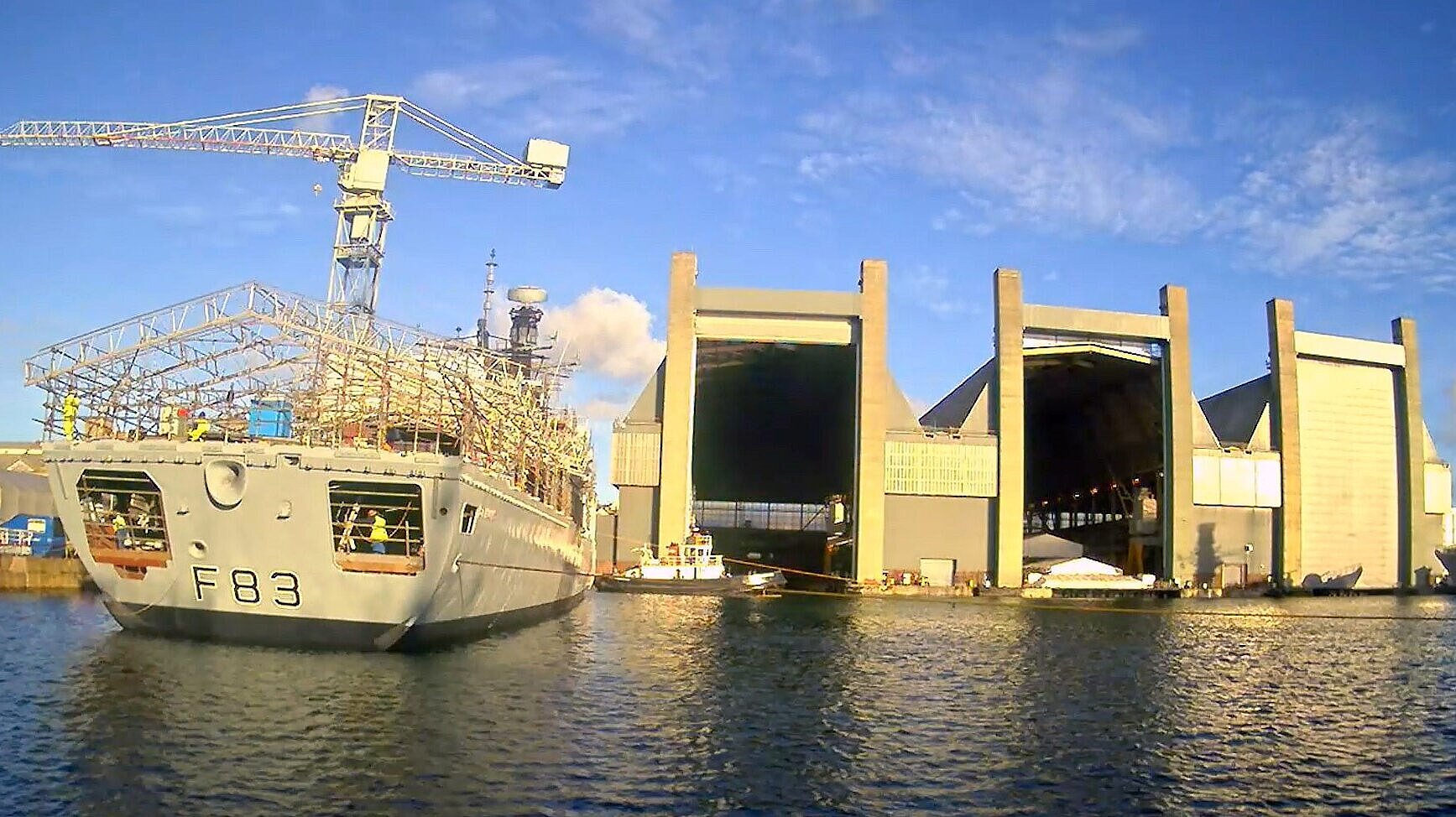
The Royal Navy’s Type 23 frigate HMS St. Albans completes major Lifex project three months ahead of schedule

HMS St. Albans undergoing her Lifex at Babcock’s Frigate Refit Facility within HMNB Devonport, in Plymouth (Source: Babcock)
The UK’s defence industries contractor Babcock International has returned the Type 23 Duke-class frigate HMS St. Albans (F83) to the Royal Navy three months ahead of scheduled, after the vessels major Lifex project at its Devonport Frigate Refit Complex, within HMNB Devonport, in Plymouth.
HMS St. Albans is the second to last Type 23 frigate to undergo a Lifex project, and although it was completed ahead of scheduled, at 58 months is still the longest Lifex for this class of vessel yet undertaken, on the youngest frigate in the class.
The last Duke-class frigate Lifex, currently taking place on HMS Sutherland (F81), is scheduled to be completed this June, a programme that will have taken 42 months to complete.
HMS St. Albans is now undergoing sea trials and once they are successfully completed, the frigate will return to service with the RN as the most advanced, equipped and capable Type 23 frigate, boasting next-generation weapons systems and radars.
During her time in drydock, Babcock engineers and other dockyard workers and subcontractors spent around 1.2 million man-hours carrying out a significant number of updates and upgrades to keep the frigate at the leading edge of war fighting capability, including a substantial power generation and machinery upgrade, the removal, overhaul and replacement of both electric propulsion motors, and finally stripping and repainting the vessel’s entire hull.
In fact, the project saw a total of 350 structural enhancements to the Type 23 frigate’s hull.
The Lifex of HMS St. Albans started in July 2019 and included fitting LEDC lighting to the vessel, adapting the frigate to accept the future anti-surface guided weapons system Sea Venom, replacing the original Sea Wolf air defence system with Sea Ceptor, upgrading the ship’s sensors with the new Type 997 Artisan air search radar and fitting the submarine hunting Type 2150 sonar in place of the older 2050 system
Perhaps the largest single part of the frigate’s Lifex was the vessel’s PGMU (Power Generation Machinery Upgrade). HMS St. Albans four original Paxman Valenta 12RP 2000CZ diesels (developed in the 1960s) replaced by modern equivalents – four Rolls Royce MTU 12V 4000 M53B engines.
The original diesels each had a power output of 1.3MW, but this dropped to 1.1MW when the frigates operated in hot parts of the world, such as the Arabian Gulf.
The new MTU diesels, each rated at 1.65MW, will provide much greater fuel efficiency and performance, especially in hot parts of the world and a 20% increase in available power output, for weapons, sensors and electronics, as well as for cruising propulsion.
For high-speed propulsion, the Type 23s use their twin Rolls Royce Spey SMIC gas turbines, which deliver 23,190kW.
